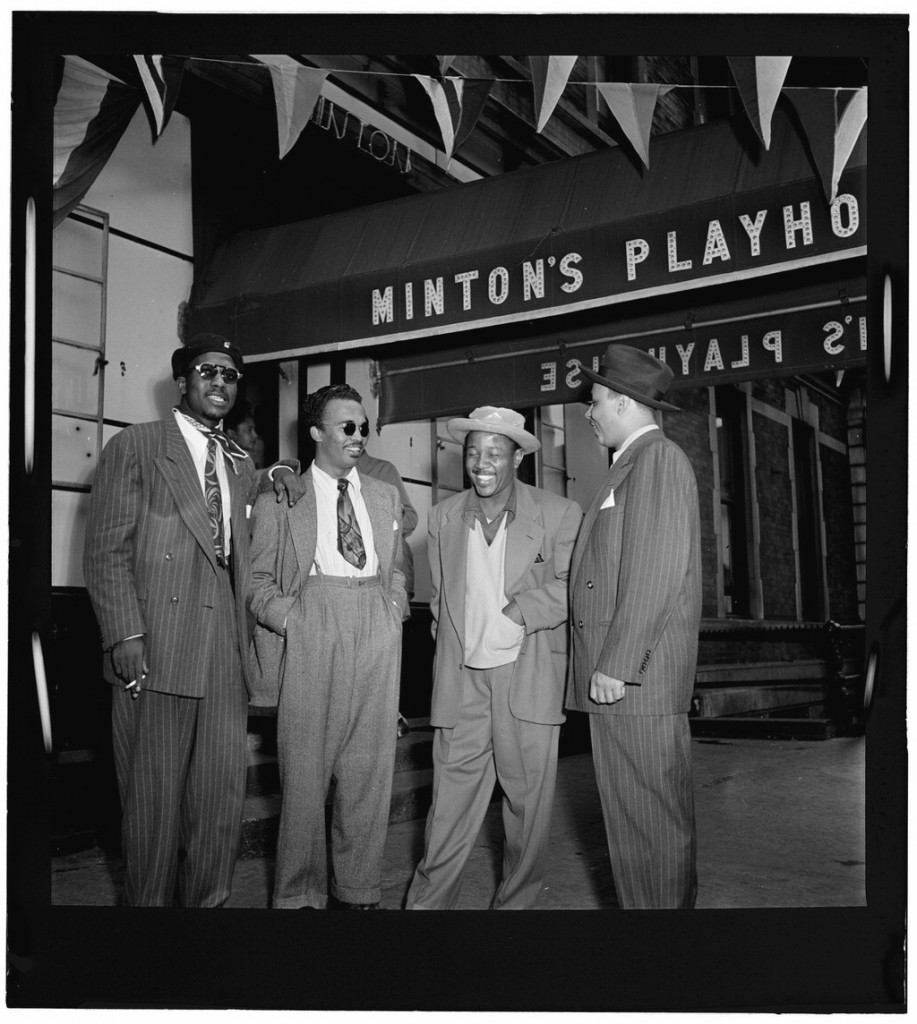Where New Styles Emerge
Jazz has been one of my greatest companions in starting a fresh expression and encouraging church renewal in my denomination. After a long day in the trenches, I can throw on a Miles Davis vinyl and feel my stress melt away with every note. In addition, the history of innovation in jazz has offered me wisdom and encouragement in my work with new forms of church.
For my birthday this year, I made a jazz pilgrimage to Harlem, hopping jazz clubs with old friends late into the night, reliving what it must have felt like to be a witness to one of the most innovative periods of American music.
At the top of my list of clubs to see was Minton’s Playhouse, the birthplace of bebop jazz. Every Monday night in the 1940s the likes of Charlie Parker, Dizzy Gillespie, Miles Davis, and Thelonius Monk would gather to jam late into the night. Out of these informal jam sessions, a new form of music was born.
Dizzy Gillepsie said of Minton’s, “What we were doing at Minton’s was playing, seriously, creating a new dialogue among ourselves, blending our ideas into a new style of music. You only have so many notes, and what makes a style is how you get from one note to the other… We invented our own way of getting from one place to the next.” What emerged was a style of jazz called bebop, known for its fast tempo and unpredictable, dissonant melodies.”
How One Man Helped Break the Barriers to Innovation
These brilliant musicians came together, and American music would never be the same, but the real hero of the era was Minton himself.
Henry Minton, a tenor saxophonist and the first African American delegate to the New York City musician’s union, opened the club in 1938. With Minton’s connections in the union, musicians could jam there without risking fines. In the days of strong musician’s unions, jazz musicians could face hefty fines from union delegates for playing in non-paid gigs.
Dizzy said of the union delegates, “He’d follow you around just waiting to see you pick up your horn without a contract, and fine you a hundred to five hundred dollars.“ The very institution designed to benefit musicians was punishing them and holding them back from innovation.
Henry Minton offered protection from the unions, thereby creating a safe place for innovation to happen. Creative musicians finally had a place to gather, experiment, and build a movement.
Tradition vs. Innovation in the US Church
Much like the music scene of 1940s New York City, the American Church faces a decision: will we continue to do the ministry of the church the same way we always have or will we move into new forms of ministry?
The traditional church, while altogether beautiful, is struggling to bring in new believers. New forms of church are having great success in bringing the church into new contexts where non-Christians are willing to come. Fresh expressions of church are popping up in bars, restaurants, homes, and various other places that people gather. These fresh expressions of church are not creating new notes per se; the marks of the church remain. They’re simply rearranging the notes, finding new and creative ways to be the church in unlikely places with unlikely people.
Fresh expressions find ways to be the church in unlikely places with unlikely people.
Tweet this.
If we are to embrace innovation and experience church renewal, we have to follow the lead of Henry Minton. Those with power and resources must create space for innovation. Our denominational and church structures should not silence or punish creative ministers, but encourage, celebrate, and resource them.
Church Renewal in the UK
Our friends in the UK have discovered that there is no way to avoid new forms of church. In post-Christendom England, the traditional church has faced stark decline. It is losing its ability to reach new people. New forms of church, on the other hand, are reaching people in large numbers.
Bishop Steven Croft recently reflected on the Church of England’s journey in new forms of church. He wrote,
“We have moved as a church in twenty years from hostility and suspicion, to tolerance, to permission giving, to active blessing, and in some cases to resourcing and integration of the new with the old.”
The American church must learn from our British family and use our resources to promote new forms of church in our changing society, not as a replacement to the traditional church, but as a missional endeavor of the traditional church.
"UK
Tweet this.
As I sat at the bar in the newly renovated Minton’s on my birthday, I thought about the musicians that had played on that stage. To be here on a Monday night in the 40s must have been remarkable.
While the club is no longer the center of the jazz world, it holds a vital place in the history of jazz. Yet Minton’s is unwilling to fade away into the history books. Minton’s refuses to be a museum, and insists on keeping up its reputation for innovation. The neon sign that once lit up the street now sits in the Smithsonian. A new sign hangs, the inside is renovated, the crowd that sits at the $25.00-per-person tables is far flung from the original crowd.
Tonight on that old rickety wooden stage where Monk tapped his feet, under the same mural that watched over Charlie Parker as the notes of his saxophone sailed high into the heavens, stands a young trumpeter, Wayne Tucker. Tucker, 27, draws from the past, playing familiar jazz standards, and trudges forward into the future with his own compositions, continuing the tradition of innovation that makes jazz and Minton’s so special.
How is your church creating space for innovation?


